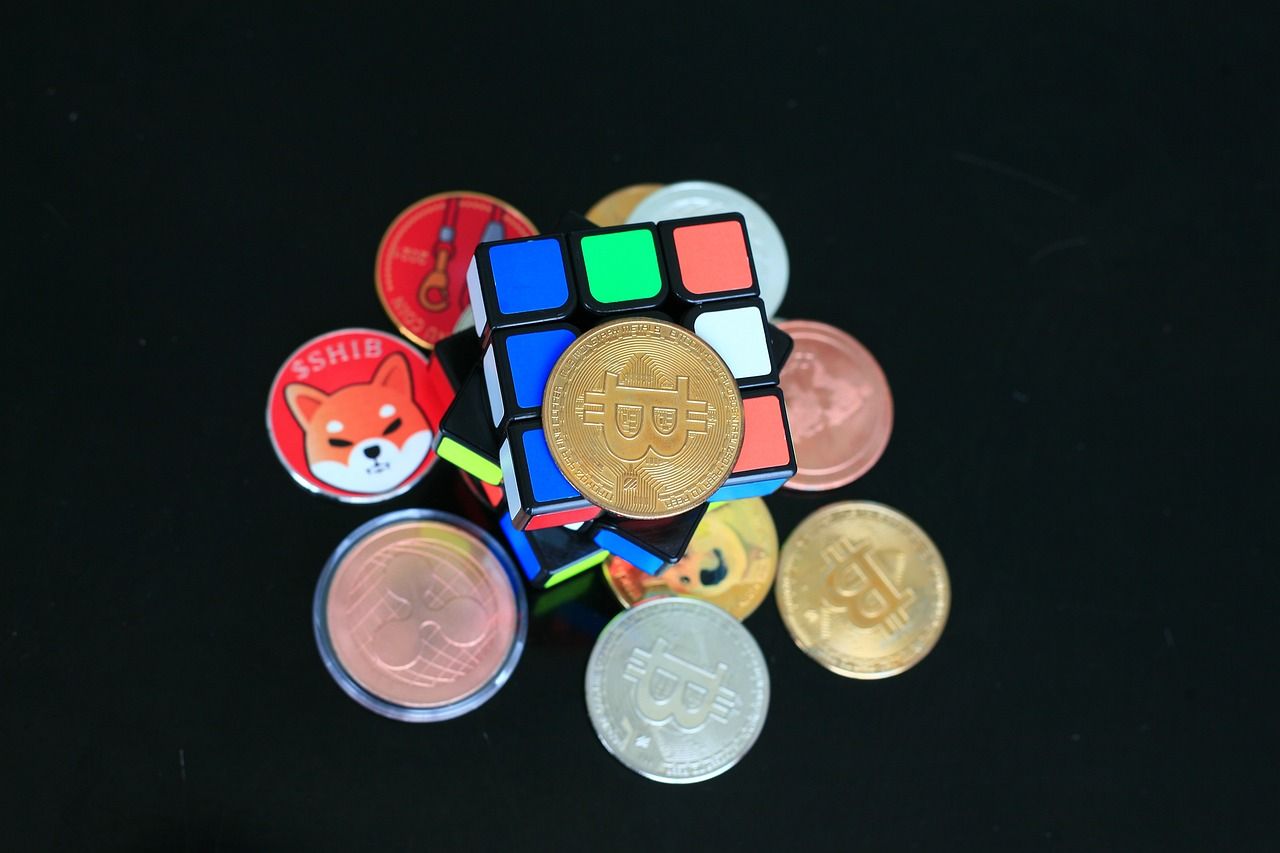What is a Hash in Cryptocurrency?
A hash is like a fingerprint for data in the blockchain. If you put in a piece of information, the hash function produces a unique code.

Table of Contents
- What is Hash in Cryptocurrency?
- What is Cryptocurrency?
- What is Blockchain?
- What Does Hash Mean in Cryptocurrency?
- Types of Hashing Algorithms in Cryptocurrency
- Hash Rate and Its Importance
- How Hashing Ensures Security in Cryptocurrency
- Hash and Crypto Mining
- What are Hashes used for in Cryptocurrency?
- Helpful Tips about Hashing for Crypto Miners
- Real-World Examples of Hashing in Cryptocurrencies
- FAQs
Hash is a key concept that forms the foundation of blockchain technology. Understanding what hash in crypto means is important, especially if you're involved in crypto mining or trading.
In this article, we'll explain what hash means in Cryptocurrency and how it functions.
But before we dive into the details of hashing, here's a basic understanding of Cryptocurrency and blockchain.
What is Cryptocurrency?
Cryptocurrency is a type of digital money or virtual currency that is encrypted and decentralised (not controlled by any government or central bank).
It operates on a system called blockchain, which is like a shared digital ledger.
The first and most well-known Cryptocurrency is Bitcoin, and since then, other similar digital currencies, called altcoins, have been created.
Cryptocurrencies are used for online transactions, trading, staking, and betting, just like traditional money (such as Dollars, Euros and Pounds).
Some popular cryptocurrencies include Bitcoin (BTC), Ether (ETH), USDT, Solana (SOL), Ripple (XRP), Litecoin (LTC) and USD Coin (USDC)
What is Blockchain?
A blockchain is a database or, as it's uncommonly called, distributed ledger technology.
Think of a blockchain as a special kind of digital record-keeping system. It works by having many computers in a network manage and maintain an identical copy of the database.
When changes or updates are made, everyone in the network agrees on these changes using math.
The data in a blockchain is organised into blocks, which are connected to each other using secret codes. While it can be used to store various types of information, the most common use of a blockchain is to keep track of transactions, like a detailed ledger.
What Does Hash Mean in Cryptocurrency?
In Cryptocurrency, a hash refers to a mathematical function used to solve blockchain computations. It's a process that encrypts or conceals data to ensure security and make it extremely difficult for anyone to guess the original information based on the hash.
To make it clearer, think of a hash as a fingerprint for data in the blockchain. If you put in a piece of information, the hash function produces a unique code, like a fingerprint.
What makes it even better is that if you change even a tiny bit of that information, the whole fingerprint changes. It's like altering a single letter in a word – the entire meaning shifts.

The length of a hash remains constant, making it nearly impossible for someone to determine the original data's length by trying to crack the blockchain. Moreover, whenever the same data is put through the hashing process, it will always produce the same hashed value.
In the context of the blockchain, only validated transactions are included, ensuring that fraudulent transactions and the spending of digital currencies more than once (double spending) are prevented. This validation process results in an encrypted value known as a "hash," which consists of a series of numbers and letters that don't resemble the original data.
Hashing provides security during message transmission, specifically when the message is intended for a specific receiver. It ensures that the message's contents remain confidential and unaltered.
Due to their unique features, hash functions are widely used in various aspects of online security. They protect passwords, detect data breaches, and confirm the integrity of downloaded files.
Types of Hashing Algorithms in Cryptocurrency
Hashing algorithms are essential to cryptocurrency networks, converting transaction data into a fixed-length hash to ensure security and prevent tampering.
Different cryptocurrencies use different hashing methods, each with unique strengths:
SHA-256 (Bitcoin) – Creates a 256-bit hash and offers strong security. However, it requires high computational power, making mining reliant on specialized ASIC hardware.
Scrypt (Litecoin) – A memory-intensive algorithm initially designed to be ASIC-resistant, making mining more accessible. However, ASIC miners were later developed to optimize Scrypt.
Ethash (Ethereum) – Designed to resist ASIC mining and favor GPU miners. It relies on a large dataset (DAG), making it harder for specialized hardware to dominate mining.
Other Algorithms Include:
- X11 (Dash): Uses 11 hashing functions for enhanced security and efficiency.
- CryptoNight (Monero): Optimized for CPU mining and privacy-focused transactions, making it harder for large mining farms to dominate.
- Blake2b: A fast, energy-efficient hashing algorithm used in newer blockchains for security with lower computational demands.
Hash Rate and Its Importance
Hash rate is the number of hash calculations a miner or network can perform per second. It’s often measured in hashes per second (H/s), kilohashes (KH/s), or terahashes (TH/s).
Higher hash rates increase mining difficulty, ensuring blocks are mined at a consistent rate.
A higher hash rate makes the network more secure, as it becomes harder for malicious actors to gain control of the majority of the network’s computing power (51% attack).
How Hashing Ensures Security in Cryptocurrency
Hashing plays a critical role in maintaining the integrity and security of blockchain networks by doing the following:
- Immutability of Blockchain: Once data is hashed and added to a block, altering it would require changing all subsequent blocks, making tampering nearly impossible.
- Prevention of Double-Spending: Hashing ensures that each transaction is unique and cannot be duplicated or reused.
- Tamper-Proof Transactions: Hashes act as digital fingerprints for transactions, making it easy to detect any changes or fraud.
Hash and Crypto Mining
In crypto mining, new tokens are put into circulation. This process involves using hashing.
Hashing involves taking the data from a block and processing it through a mathematical function, producing a fixed-length output. By having a fixed-length output, the security of the process is increased.
Solving a hash begins with the data in the block header and essentially means solving a complex mathematical problem.

The block header contains various pieces of information, such as a version number, a timestamp, and the hash used in the previous block.
It also includes the hash of the Merkle root, the nonce, and the target hash.
Here's an explanation of what these terms mean:
1. Merkle Root: Imagine a huge tree with many branches, where each leaf represents a transaction. The Merkle root is like the very top of that tree, serving as a summary or fingerprint of all the transactions below it. It's calculated by taking pairs of transaction hashes, hashing them together, and repeating the process until there's only one hash left—the Merkle root.
2. Nonce: A nonce is a short word for "number used once." In the context of blockchain, it's an arbitrary number that miners change over and over again when trying to solve a mathematical puzzle. This number is combined with other data from the block to create a hash that meets certain conditions. The purpose of the nonce is to ensure each block's hash has a specific pattern, meeting the difficulty level set by the network.
3. Target Hash: It's like a goal set for miners to hit. The target hash is a numerical value representing the difficulty level or how hard it is to find a valid hash. Miners need to find a hash that is lower than the target hash for their block to be considered valid. The target hash is adjusted periodically based on the network's rules to keep block generation at a consistent pace.
Miners participating in crypto mining aim to be rewarded with Cryptocurrency after successfully solving a puzzle. This puzzle involves using hashing as a crucial component.
Miners primarily focus on finding a nonce, which is a string of numbers. They add this nonce to the hashed contents of the previous block and then hash it.
If the resulting hash is less than or equal to the target hash, it is accepted as the solution.
The miner is then rewarded with Cryptocurrency, and the block is added to the blockchain.
In a nutshell, miners use hashing to solve mathematical problems and successfully add blocks to the blockchain, earning rewards in the process.
What are Hashes used for in Cryptocurrency?
Hashes play a vital role in the cryptocurrency ecosystem. Here are three of their key uses:
1. Data Integrity: Hashes ensure the integrity of the data within a blockchain. Each block in a blockchain contains a unique hash, which is calculated using the block's data. If anyone tries to tamper with the data inside a block, even making a small change, the resulting hash will be completely different. This makes it easy to detect and reject any tampered blocks.
2. Proof-of-Work (PoW): Cryptocurrencies like Bitcoin use the concept of mining, which involves solving complex mathematical puzzles. Miners attempt to find a unique hash by combining a nonce, the block's data, and the previous block's hash. The goal is to find a hash that meets specific criteria, such as having a certain number of leading zeroes. This process requires substantial computational power, making it challenging for anyone to manipulate the network.
3. Security: Hashes provide a layer of security for the network. Since the hash of each block depends on its data and the previous block's hash, changing the data in any block would alter the hash of that block as well as all subsequent blocks. This makes it almost impossible for a malicious actor or scammer to modify the blockchain's history without being detected.
Helpful Tips about Hashing for Crypto Miners
Here are a few important points to keep in mind if you're considering crypto mining:
1. Determining the Nonce: Solving the hash for a block involves finding the correct nonce, which is a number used once. Miners need to try different nonce values and combine them with other block data to calculate a hash. This often involves much trial and error since miners must test various nonce options to find the one that works.
2. Time and Trial: It's highly unlikely for a miner to stumble upon the correct nonce on the first attempt. Miners can potentially test many nonce options before finding the right one. This process requires computational power and can take time, depending on the mining setup and network conditions.
3. Difficulty and Time: The difficulty level of mining measures how hard it is to create a hash that meets the target hash requirement. As the difficulty increases, finding a valid nonce and generating a solution becomes more challenging. Consequently, the mining process will likely take longer when the difficulty is higher.
Extra useful tips for crypto miners:
- Optimise Hardware: Crypto mining can be resource-intensive, so it's important to have powerful hardware, like specialised mining rigs or ASICs, to increase your chances of finding a valid hash.
- Join a Mining Pool: Consider joining a mining pool where multiple miners combine their computational power to increase their chances of finding a valid hash. Payouts are then divided among participants based on their contribution.
Real-World Examples of Hashing in Cryptocurrencies
Hashing is used extensively in popular cryptocurrencies:
- Bitcoin: Uses SHA-256 for mining and transaction verification. Miners compete to solve complex hash puzzles to add new blocks.
- Ethereum: Originally used Ethash, but after transitioning to Proof of Stake (PoS), hashing is no longer central to its consensus mechanism.
- Litecoin: Uses Scrypt, which is less resource-intensive than SHA-256, making it more accessible for individual miners.
To Recap
- Hashing is a fundamental concept in blockchain technology and Cryptocurrency.
- Miners use hashing to solve mathematical problems and successfully add blocks to the blockchain, earning rewards in the process.
- Hashing also helps ensure data integrity and network security for cryptocurrency trading and transactions.
FAQs
Q: What is the role of hash in Cryptocurrency?
A: Hash in Cryptocurrency serves as a mathematical function that encrypts data in the blockchain, ensuring security and preventing unauthorised access.
Q: How does a blockchain hash work in Cryptocurrency?
A: A hash function acts like a magical fingerprint, producing a unique code for given data. Even a minor change in the data alters the entire hash, enhancing security.
Q: Why is hashing important in the blockchain?
A: Hashing in the blockchain ensures data integrity by creating a unique hash for each block. Tampering with block data results in a completely different hash, easily detecting unauthorised changes.
Q: What role does hashing play in crypto mining?
A: In crypto mining, hashing is integral to solving complex mathematical problems. Miners use hashing to find a nonce, contributing to the creation of valid blocks and earning rewards.
Q: How is hashing related to Proof-of-Work (PoW) in cryptocurrencies like Bitcoin?
A: Hashing is a crucial component of PoW, where miners aim to find a unique hash meeting specific criteria. This process, requiring substantial computational power, adds security to the network.
Q: What are the key elements in a block header used in hashing during mining?
A: The block header includes the Merkle root, nonce, and target hash. The Merkle root summarises transactions, a nonce is a variable for solving puzzles, and the target hash sets the difficulty level for valid blocks.
Q: How do miners use hashing to add blocks to the blockchain?
A: Miners use hashing to solve mathematical problems and find a valid nonce. If the resulting hash meets the criteria, the block is added to the blockchain, and miners are rewarded with Cryptocurrency.
Q: What is the role of hashing in ensuring security during message transmission?
A: Hashing provides security by encrypting messages. It ensures the confidentiality and integrity of the message contents, making it suitable for secure communication in cryptocurrency transactions.
Q: How does hashing contribute to data integrity in a blockchain?
A: Hashes ensure data integrity by creating a unique fingerprint for each block. Any attempt to tamper with block data results in a completely different hash, easily detecting and rejecting tampered blocks.
Q: Why are hash functions widely used in online security beyond Cryptocurrency?
A: Hash functions are employed in various aspects of online security, including password protection, data breach detection, and file integrity confirmation due to their unique features.
Q: What are the challenges miners face in determining the correct nonce?
A: Determining the correct nonce involves significant trial and error. Miners must try different nonce values, combining them with other block data to calculate a hash, which can be time-consuming.
Q: How does the difficulty level impact the time required for crypto mining?
A: The difficulty level in mining measures how hard it is to find a valid hash. As the difficulty increases, it becomes more challenging to find a valid nonce, leading to a longer mining process.
Q: Why is optimising hardware important for crypto miners?
A: Optimising hardware, such as using specialised mining rigs or ASICs, is crucial to increase the miners' chances of finding a valid hash. This optimisation is necessary due to the resource-intensive nature of crypto mining.
Q: What is the benefit of joining a mining pool for crypto miners?
A: Joining a mining pool allows miners to combine their computational power, increasing the likelihood of finding a valid hash. Payouts are then divided among participants based on their contribution.
Q: How does hash work in Cryptocurrency?
A: Hash in Cryptocurrency works as a mathematical function that encrypts data, producing a unique code or fingerprint for enhanced security.
Q: How long is a crypto hash?
A: The length of a crypto hash remains constant, providing a fixed-length output, making it nearly impossible for someone to determine the original data's length by trying to crack the blockchain.
Disclaimer: This article was written to provide guidance and understanding. It is not an exhaustive article and should not be taken as financial advice. Obiex will not be held liable for your investment decisions.




